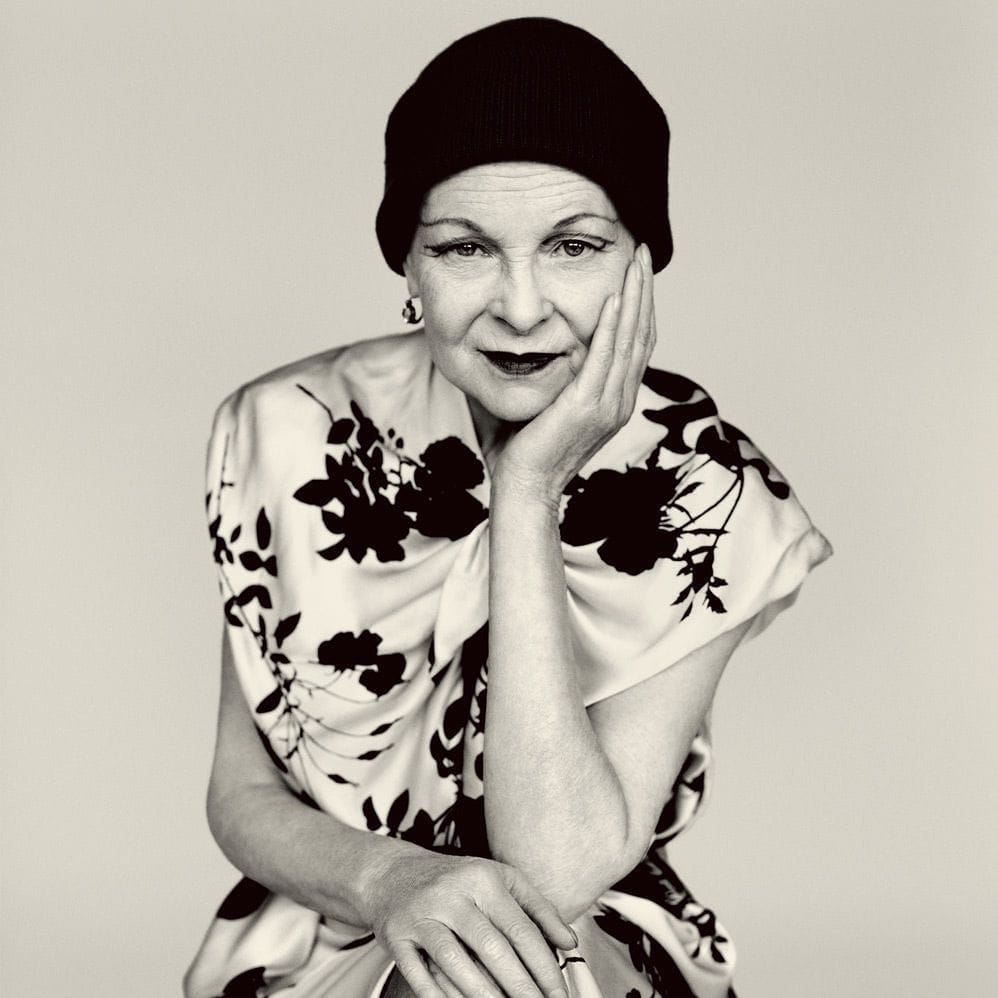A retrospective in Punk: The Life and Death of Dame Vivienne Westwood

By Sarah Cotte, BSc Politics, Philosophy and Economics
er then-partner Malcolm Mclaren. The shop sold rock-and-roll-inspired fetish wear, supplying London’s underground, sexually deviant punk scene with provocative pieces designed to make the conformist masses shudder. Westwood also created clothing for the punk-rock band Sex Pistols, furthering her visibility.
As punk died down and the Sex Pistols broke up, Westwood took her career and creative focus elsewhere. Her Autumn/Winter 1981 collection, ‘Pirates’, launched the Westwood brand into the world of high fashion, with the collection first shown on the catwalk as a collaboration between her and Mclaren. Westwood drew inspiration from the romantic historical dress of the 17th and 18th centuries, but always kept her subversive edge. The Autumn/Winter 1982 collection, ‘Buffalo Girls(Nostalgia of Mud)’, drew on elements of Native American dress, rooted in the belief that Western aesthetics find their origins in other cultures and societies.
Later, as her brand expanded, Westwood dedicated her attention to cultural and fashion exchanges between England and France. She produced in Autumn/Winter 1993 the ‘Anglomania’ collection, which she offered as a reinterpretation of the past. Concerned with giving her creations a sense of elegance, Westwood the ‘ugly casualness’ of contemporary commercial fashion.
“supplying London’s underground sexually deviant punk scene with provocative pieces meant to make the conformist masses shudder”
Even at the height of her career, Westwood remained committed to her rebellious and anti-establishment spirit. In the 1992 Birthday honours, during which Westwood was appointed Officer of the Order of the British Empire (OBE), the designer showed up in what initially seemed to be a modest suit and skirt. It was later revealed as she twirled in front of photographers that all she was wearing underneath were sheer tights.
Deeply political, Westwood also involved herself in a variety of causes, from climate change to the Julian Assange case. Westwood appeared on the front cover of Tatler dressed as Margaret Thatcher, emblazoned with the caption ‘this woman was once a Punk’, the cover was subsequently included in the Guardian’s list of best-ever UK magazine covers.
In 2015, she drove a tank to then-prime minister David Cameron’s home in an anti-fracking protest. Both the ethos of her brand, and the beginnings of her career were built on sustainability – Westwood was brought up in a working-class home, and would take apart second-hand garments to study how they were made.
The designer has consistently shown her support for the Wikileaks founder Julian Assange. In 2012, she designed an ‘I am Julian Assange’ unisex T-shirt, with 100% of the profits going to Wikileaks and its members. In 2020, she suspended herself in a birdcage, dressed as a canary, to protest Assange’s extradition to the US. Again, in 2022, she designed the suit and dress that Assange and his wife wore at their wedding. Fashion and politics always went hand in hand for Westwood, a designer who continuously used her platform to direct people’s attention to the causes that mattered to her.
A cultural icon and fashion genius, Westwood’s passing is a tremendous loss for the fashion world. Either way you look, the arts has now become a less interesting place, it is up to new designers to take up the mantle.
(Photo Credits: The Gentlewoman)



